Have you ever asked yourself, “Wow, I would have loved to be that fly on the wall,” well, when it comes to the Icelandic Pony, they weren’t only the fly on the wall but the foundation of what now is the beautifully vast and untouched Iceland. Considered to be the purest breed in the world, early Icelandic civilizations’ culture and lifestyle were built on the backs of these sturdy and sure-footed four-legged creatures. Their size, build, temperament, and work ethic made them the only pony that could brave the harsher terrains of Iceland’s backcountry. In modern practices, the pony remains true to its traditional roots, with a tourist spin, of course, to help let those around the world appreciate the scenic beauty of both the pony and its gorgeous lands. They are the experts after all. But just how did this pony standing at just 13.2hands come to be Iceland’s pride and joy?
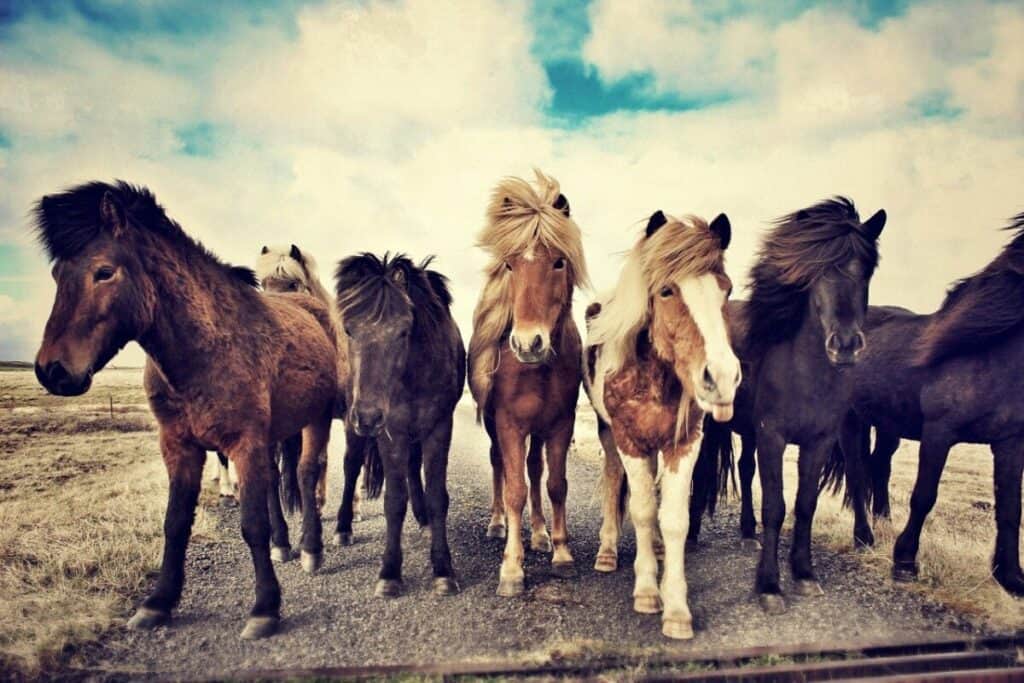
A Brief History
First and foremost, out of respect for the breed and their breeders, it is important to call these creatures horses, despite their size clearly sustained within the confines of “pony nature.” No sir, these are horses both in spirit and body that were among the first to walk the grounds of Iceland’s rigid landscape, paving the way for future generations.
Iceland is a nation that prides itself on its myths and legends, or as its people like to call them, their ancestral stories. These stories, no matter their fictitious nature, come together to build the traditions of the people, culture, and most importantly, the way of life.
The Icelandic Horse is no stranger to this long-form tradition, as their origin story is one that thrives on mythical folk tales tangled with a documented history. While their initial presence was first noted during the 10th century during the inflow of settlers from Western Norway, legend takes us to the Vikings ages, a time of bearded men with spears and swords with a passion for conquest. Such strong men required an equally robust, sturdy, and trustworthy steed capable of withstanding heavy weights over a prolonged period; that’s where our trusty Icelandic Horse comes in. Given their size-to-strength ratio, they were the perfect, travel-sized, if you will, horse to carry the larger Vikings on their trail-blazing quest.
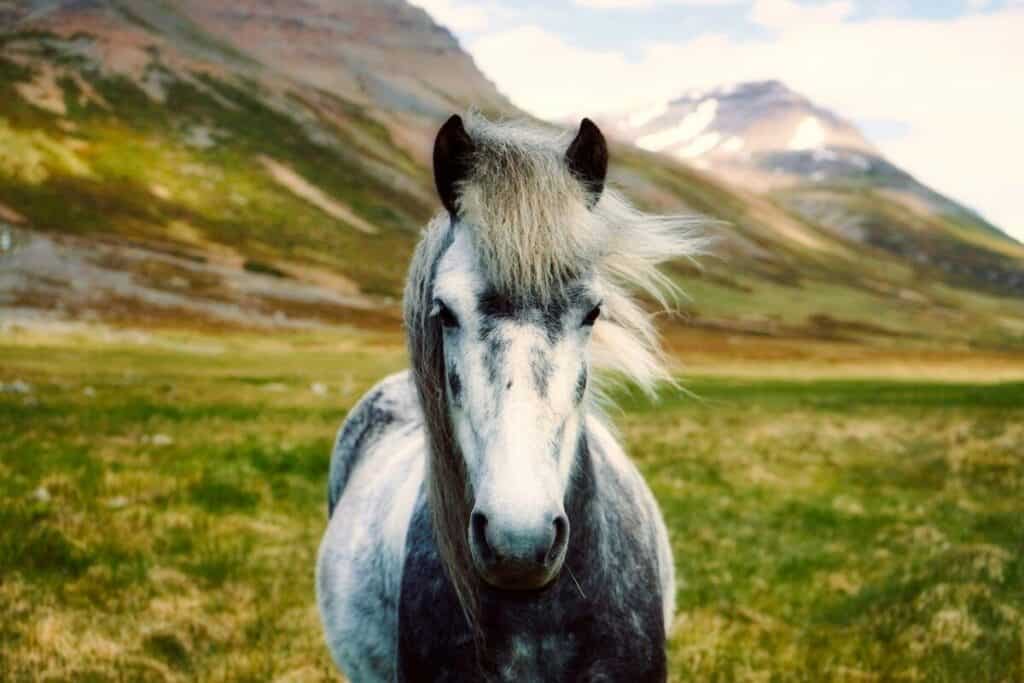
The legend states that it was as early as 900 AD that the Vikings decided to share their pocket rocket with others when they imported the breed to Iceland, marking a new and remarkable beginning. While many other breeds were brought over in succeeding years, only the Icelandic Horse could withstand the brutal temperatures and terrains of the new land, leaving them essentially the “last man standing.” They were quickly able to adjust to the dropping temperatures, rocky landscape, and vast valleys as their roamed freely in search of food and water. This became the breed’s new way of life, wild and free across the breathtaking scenery of the great Icelandic outback, not too bad if you ask me.
As the settlers of Norwegian and Viking descent began a new life, these horses became the first to walk Iceland’s uncharted lands. To this day, there are still areas untouched by man, only explored by the curious hoofs of the Icelandic herds.
Preserving the Lineage.
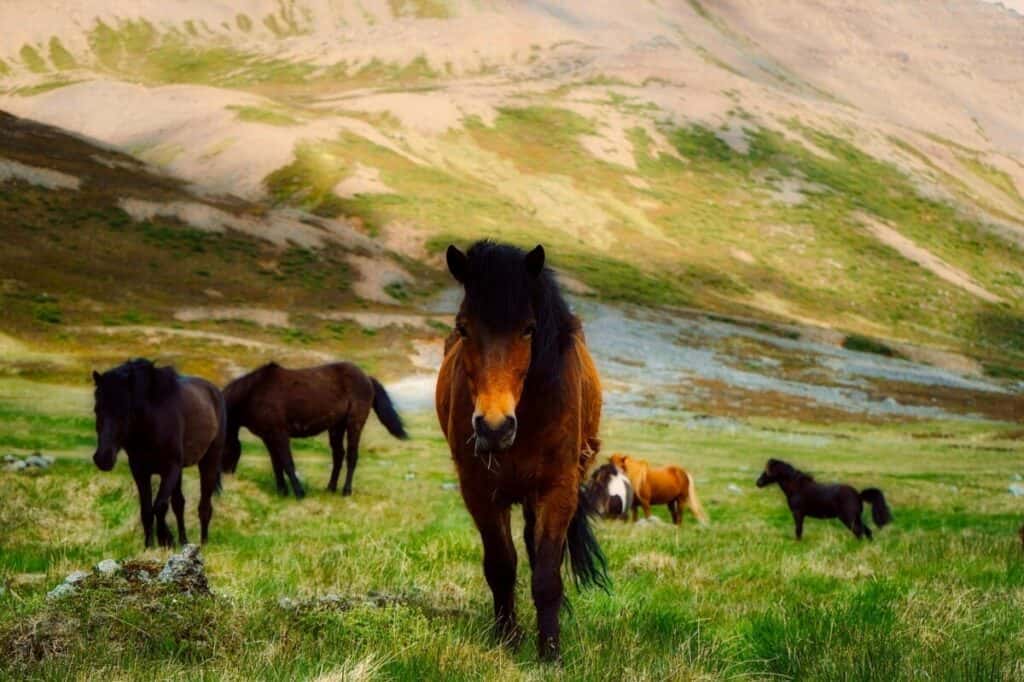
This was the purest breed of the Iceland wilderness, so any threat to their bloodline was met with a quick and efficient boot. For instance, shortly after settling in, communities started to import other breeds thought to be a beneficial new family member considering all the work required to build a nation. But soon after their arrival, these new breeds began to pose a severe threat to the Icelandic Horse’s bloodline, moving them away from their natural and desired abilities. Following this discovery, parliament declared in 930 AD that any future equine imports were strictly prohibited to maintain the ideal breed in its traditional form, naming it the purest breed in the world.
Since this law, it has been 800 years without any cross-breeding, signifying the breed’s authenticity dating back to their Viking form. The herds were left to graze the lands, free of fences and gates due to their unmatched homing sense. When the season of agriculture and springtime work returned, so did the horses. This practice still stands today. I guess they wander the slopes of Iceland with one particular slogan in mind; “There’s no better place than home.”
In early civilizations, the horse was used for a wide variety of activities such as transportation, pleasure riding, and agricultural purposes. Due to their incredible loyalty, hardy work ethic, and gentle nature, Iceland’s early peoples had found the perfect steed. The first real Icelandic Horse breeding program was established in 1879, taking place in Skagafjordur to spread across the nation in a sweeping fashion. That year marked the beginning of selective breeding, with only one goal in mind; to keep the horse precisely as it was discovered. The breed was perfection in the eyes of Icelanders, so why change a single characteristic? Nowadays, there are over 30 privately owned breeding programs all dedicated to this magnificent breed, including Lėttleiki Icelandics and Stal Metz.
But what is it they are breeding for?
The tiny but mighty horse has a leg up on all other breeds, setting it apart from any breed registry. When it comes to equine gaits, we tend to assume the number four, right, but what if we added one more to that? That’s right, the Icelandic Horse has five gaits, all of which have an intended purpose to complete work. Let’s take a deeper look into these gaits, shall we?
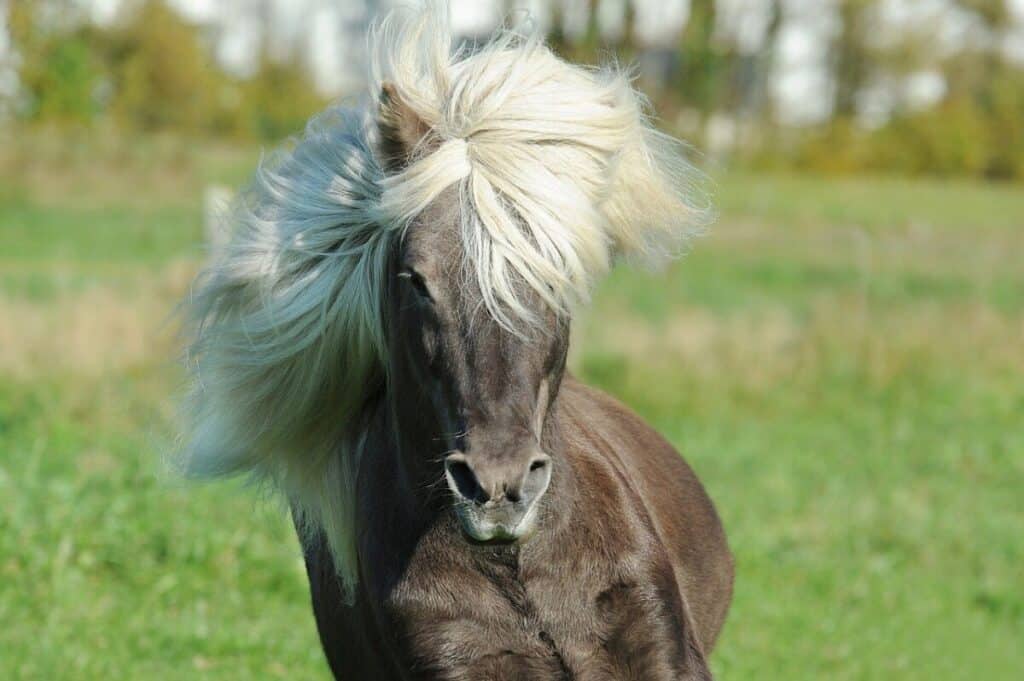
The first gate is called the “Fetgangur,” which simply translates to “walk.” It is a four-beat symmetry gait that is the slowest of the five gaits. The next pace is referred to as the “Brökk,” which is more commonly known as the trot. The “Brökk” follows a two-beat pattern, as the horse moves two legs diagonally in time. While most are familiar with this gait, this gait is used to cover rougher countries over long periods and distances in Icelandic traditions. In addition, this gait essentially acts as a “rest” gait, allowing the horse to cover ground still while conserving energy in the long-run. This quality was instrumental during the Viking’s times.
The third gait is named the “Stökk,” or the canter in simpler terms. This is a three-beat gait made complete by the appearance of the horse gliding over air, making it a comfortable gait to ride. In other riding styles, the canter and the gallop are considered two different versions of the gait, but in Icelandic terms, they are one and the same.
Now, this is where the fun comes in. Following the canter/gallop, the Icelandic Horse can enter another gait called “Skeid,” a lateral pace for attaining higher speeds in shorter distances. The “Skeid” is also commonly referred to as the Flying Pace, often compared to sitting on a couch during riding. The gait follows a two-beat pattern where the front and back leg of the same side move simultaneously, followed by a moment of suspension, between each pair of foot falls, creating a feeling of gliding for the rider. The purpose of this gait is primarily for equitation showing, but can be seen on the trails. The flying gate can reach speeds of up to 48km/h, making it nearly equivalent to the full gallop, but it is usually only ridden in short durations.
The last gait is named the “Tölt,” which is similar to a trot, described as a smooth four-beat gait where the horse seems to move forwards with an effortless appearance. This gait contains four equal beats, including near hind, near fore, off hind, and off-fore. When horses are in this gait, they tend to put more weight on their hindquarters than other paces. This gait can be accomplished at an array of speeds, with the footfall matching the walking gait with the apparent addition of speed.
While the “Tölt” comes naturally to some horses, others require training to reach the gait’s full efficiency. Riders can be seen holding glasses of wine while in the “Tölt” to showcase the particular gait’s level-headedness. Considering the smooth nature of the gait, it is normally practiced when covering broken ground to make for a more comfortable ride. With all these gaits, there is sure to be a preference for everyone and anyone.
Where Are They Now?
Today, the Icelandic Horse is used primarily for showing and touristic trail excursions to celebrate the breed’s ancient ways. Iceland prides itself on this particular breed, meaning they will do anything and everything to celebrate its existence. Annually, the nation takes part in spring-time competitions and showing demonstrations where Icelandic breeders from all over come to showcase their best ponies. In preparation for the show season, the horses are started under saddle at three and a half years during the fall, with a short break before returning to work in December.
During the shows, the horses face a panel of judges who evaluate each horse based on their conformation, performance, and gait fluidity. Breeders and trainers take months to years of preparation for these showings, where they are given the opportunity to display their prized horses in a conventional setting. When the ponies, or should I say horses, are not dolled up for showing season, they can be found in nearly any other facet of Icelandic equestrian disciplines.
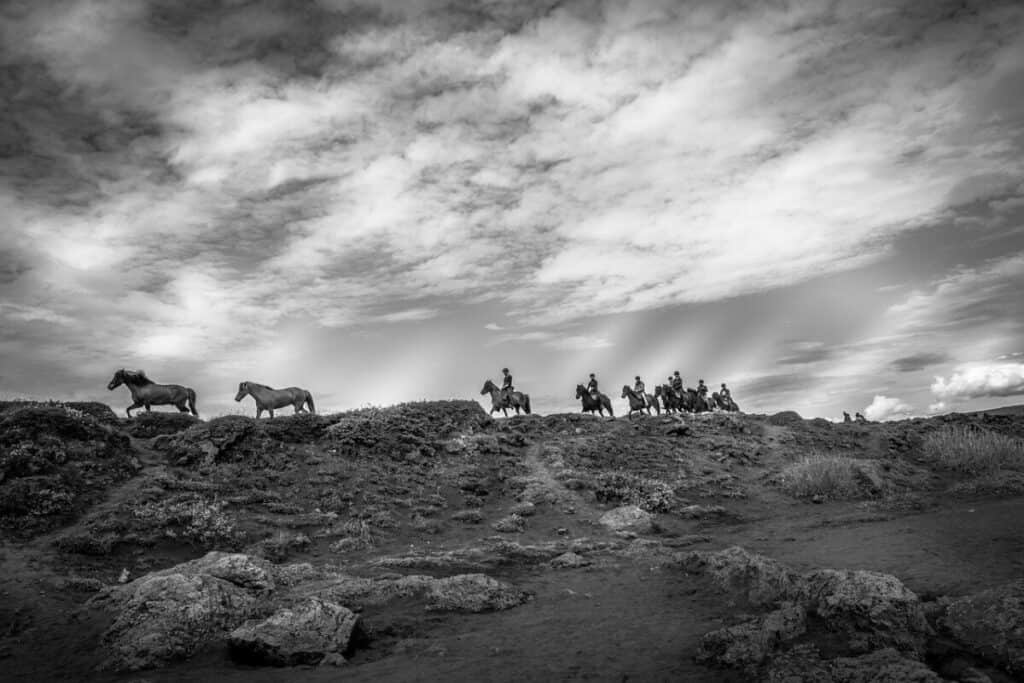
Due to their combined dispositions of loyal behaviors, gentle gestures, and athletic capabilities, the Icelandic horse makes for an ideal pleasure horse, ready for any job you throw their way. Do not let their short appearances fool you, for they are easily capable of withstanding the weight of a full-grown man. During the spring and summer months, many of the “ponies” can be seen assisting in annual sheep herding, specifically and notably The Annual Sheep Round-Up. Large sheep herds usually spend the winter months grazing the great fields of the Icelandic mountains, roaming free with animals from all different farms. When it comes time to round them up, Icelanders mount the horses, round up the herd, and begin separating off the sheep into their respective farms. This is no easy work, so it requires the level-headedness of this versatile horse.
“The Icelandic Horse is Versatile, Study & Kind. When it is not taking Tourists around the Wilds of Iceland, it is Helping to Round Up Sheep with the Icelanders.”
While their roots remain in Iceland, there are about 100,000 Icelandic Horses spread across international seas. But these study abroaders don’t get to spend their free time roaming the uncharted territory of Iceland’s back-country, returning to home base when they are needed. Burdens, like fences and containment, are far from these four-legged creature’s minds. These little horses display an appreciation for a home that many of us can learn from; no matter how far and wide you are from it, home is always where the heart is.
This Article was originally published in the March 2021 Issue of Irish Sport Horse Magazine.
